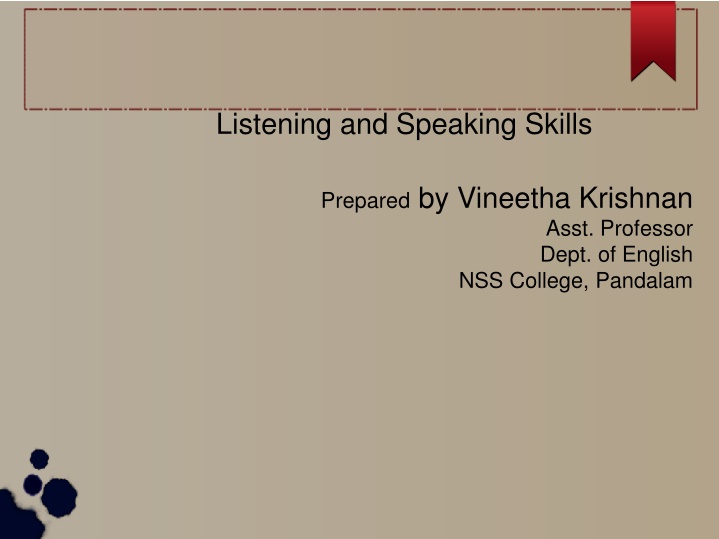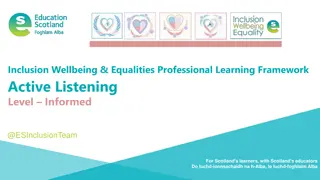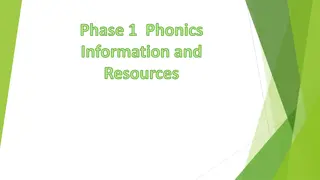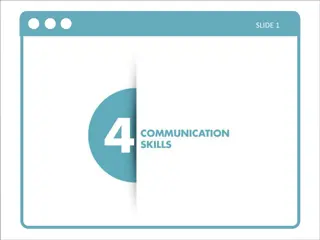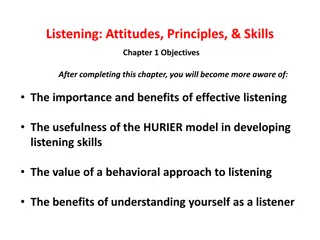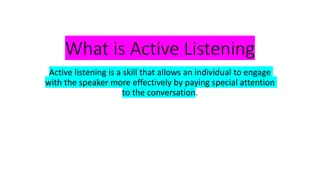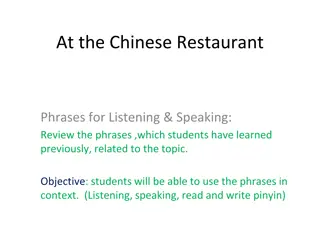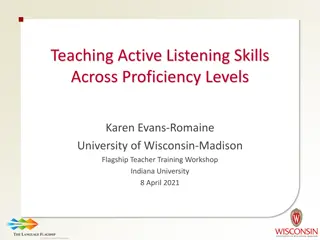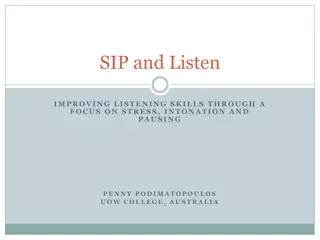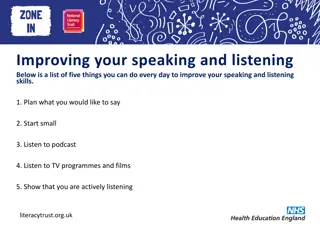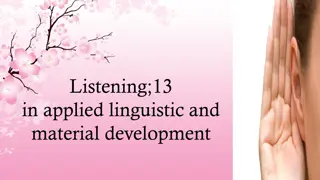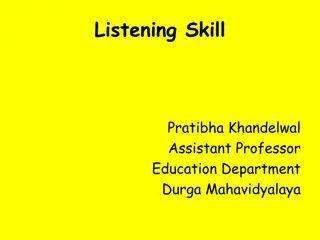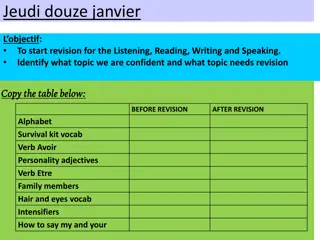Enhancing Listening and Speaking Skills: A Comprehensive Guide
Explore the significance of listening skills in professional and personal settings, understand the difference between listening and hearing, learn the essential components of the listening process, identify common problems and barriers to effective listening, and discover strategies to overcome these obstacles. Valuable insights shared by Asst. Prof. Vineetha Krishnan from NSS College, Pandalam, will help you improve your listening abilities and enhance communication proficiency.
Download Presentation

Please find below an Image/Link to download the presentation.
The content on the website is provided AS IS for your information and personal use only. It may not be sold, licensed, or shared on other websites without obtaining consent from the author.If you encounter any issues during the download, it is possible that the publisher has removed the file from their server.
You are allowed to download the files provided on this website for personal or commercial use, subject to the condition that they are used lawfully. All files are the property of their respective owners.
The content on the website is provided AS IS for your information and personal use only. It may not be sold, licensed, or shared on other websites without obtaining consent from the author.
E N D
Presentation Transcript
Listening and Speaking Skills Prepared by Vineetha Krishnan Asst. Professor Dept. of English NSS College, Pandalam
Listening Skill Introduction Valuable professional setting Helps to get into a profession in communications Very important in language learning Students acquire vocabulary, grammar and better pronunciation Listening occurs naturally in mothertongue skill in personal, academic and
Definition lListening as defined by international listening Association l the active process of receiving, constructing meaning from, and responding to spoken and/or non-verbal messages. It involves the ability to retain information, as well as to react empathically or appreciatively to spoken and/or non-verbal messages
Listening vs Hearing lListening a deliberate and conscious act lHearing is a passive act lUnlike hearing, listening improves through conscious effort and practice
Process of listening Hearing Understanding Interpreting Evaluating Responding Remembering
Problems in listening lTrouble catching the actual sounds of english lInability to understand fast, natural native- sounding speech lNeed to hear more than once lLimited vocabulary power lProblem in predicting what te speaker is going to say lDifficulty in interpreting the meaning of a long text
Barriers to listening lEmotional barriers lPsychological barriers lLinguistic/ semantic barriers lSocio-cultural barriers lPhysiological barriers
How to overcome barriers lAvoid physical distractions lEmpathise with the speaker lTry to understand the speaker's point of view lTry to understand cultural variations lListen and read effectively lPractice good bod language tech
Conclusion Listening creates acceptance and openness. It leads to learning and personal development. Good listening reduces stress and tension, minimises confusion and misunderstanding.
The organs of Speech The lungs The Larynx and the Vocal cords The Pharynx The Soft Palate The mouth The lips The tongue
Phonetics Why do we learn phonetics? Phonetics familiarize ourselves with basic sounds of english language Spoken english shows variations based on region, social class and levels of formality. So we need a standard in pronunciation
RP lIt s the widely known and accepted pronunciation of English, Received Pronunciation lIt is also known as BBC english or Queen's English lIt is the pronunciation of the people of southern England
The Syllable A syllable is a unit of pronunciation which is uttered in one chest pulse. eg. The word begin is pronounced in two chest pulses. Identify the syllables in the following words? Table, teacher,mother, grammar, phonetics
Strong forms and weak forms Form class words have only one pronunciation but function class words have many pronunciations
Intonation Intonation refers to the falt l and rise of the voice while speaking.if the pitch of the voice moves from a high level to a low level it is calledfalling tone.if the pitch moves from a low levelto a high level it is called a rising intonation.
Conclusion To Promote the intelligibility of indian English, indian speakers should be familiarised with the phonetic features of the english language- positions of the english phonemes, stress, rhythm and intonation in connected speech.
